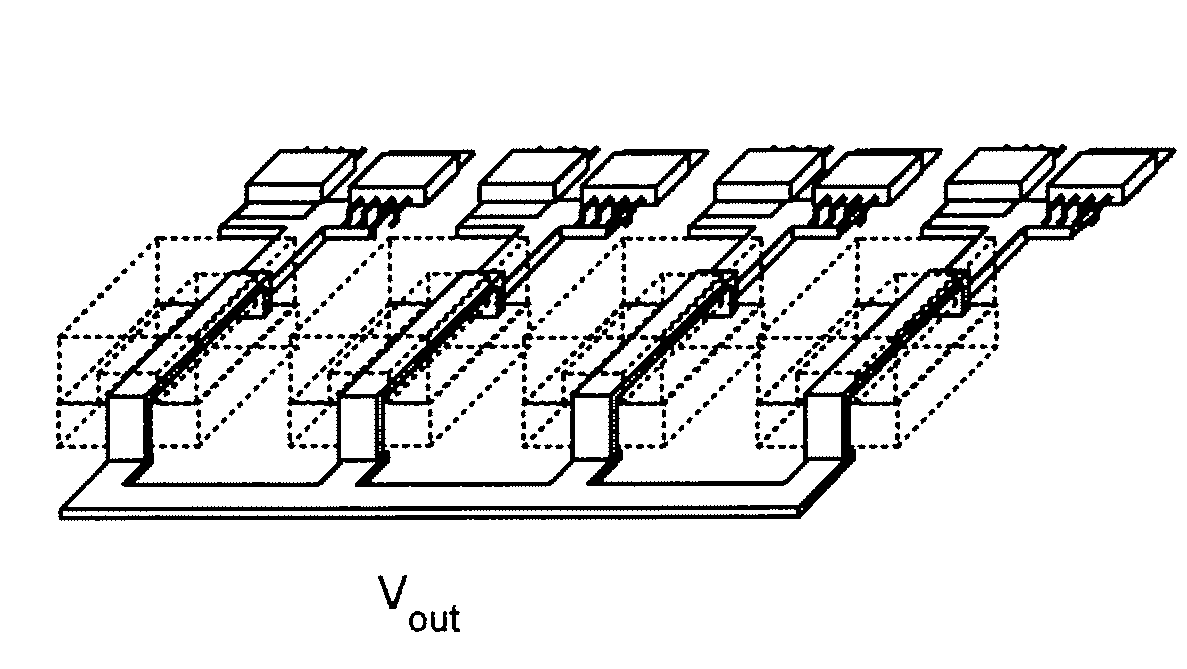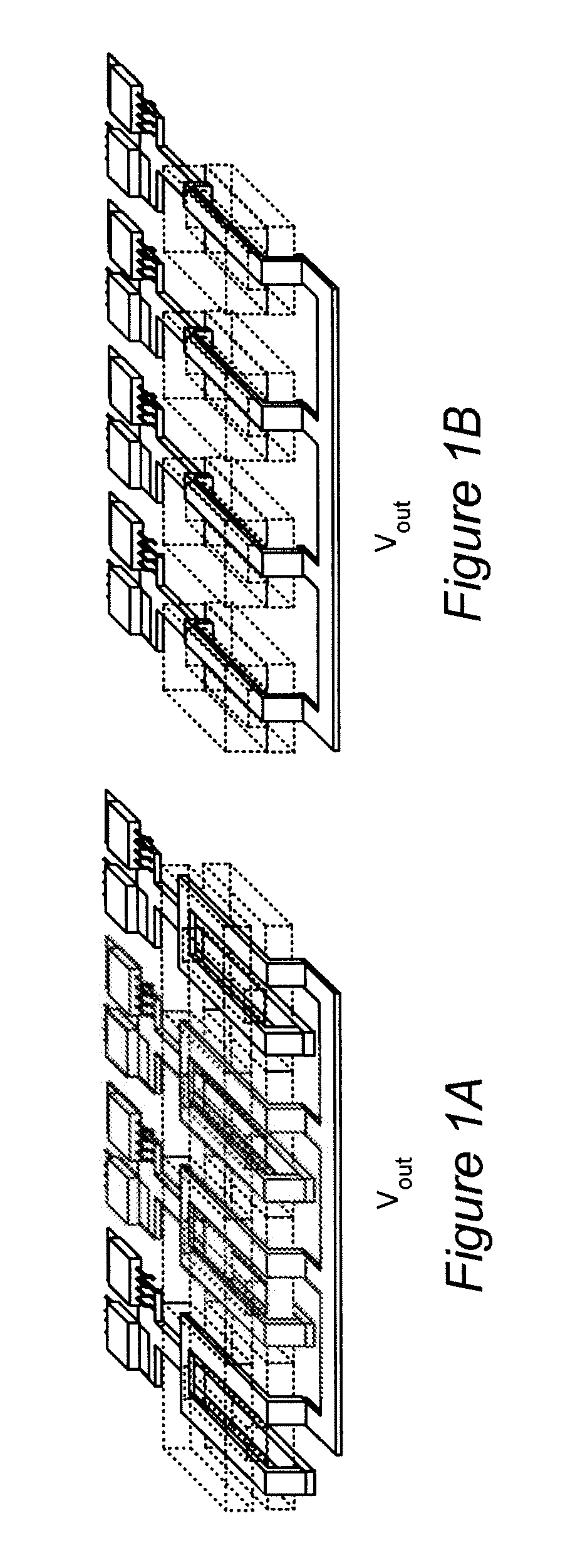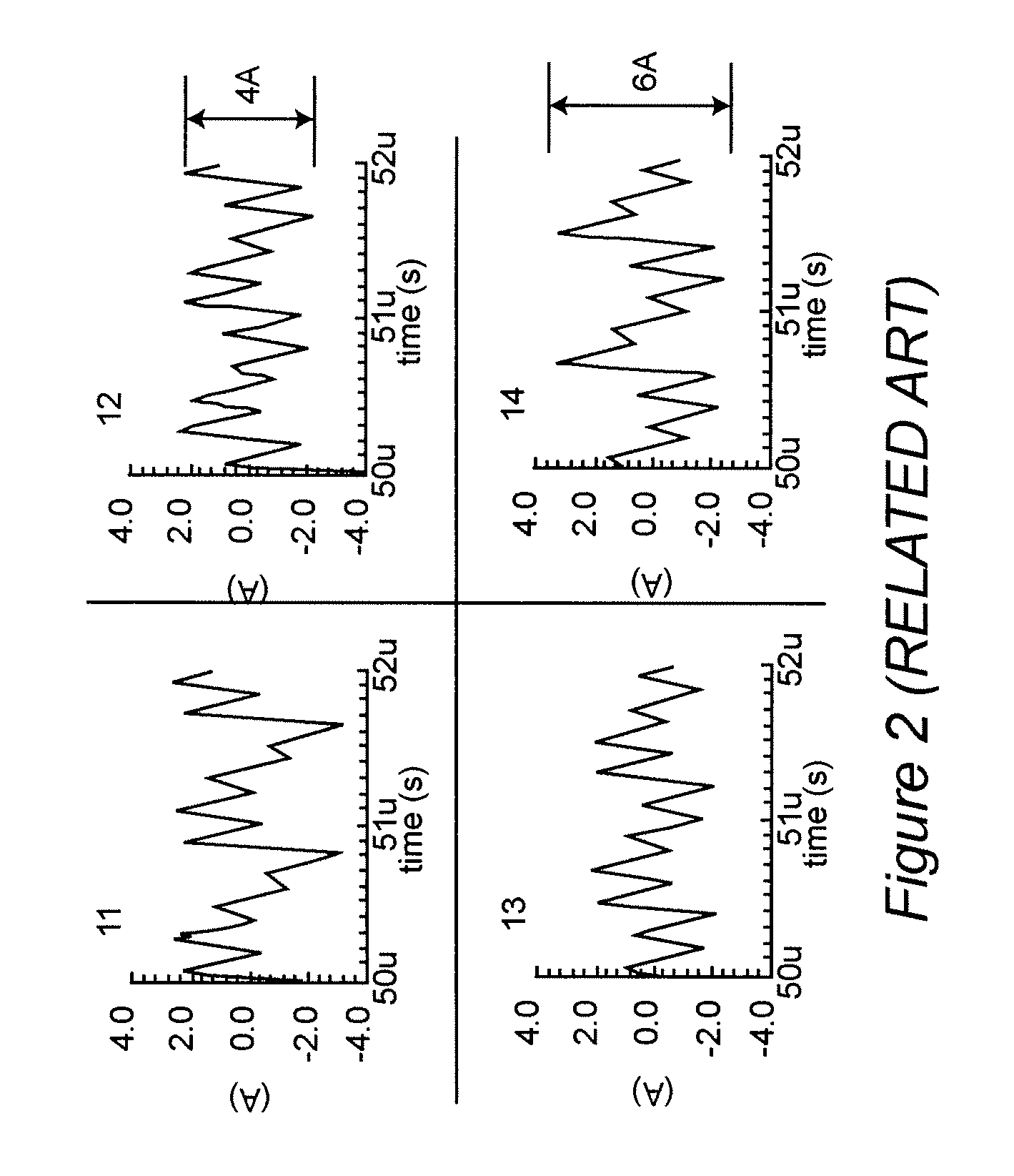Coupled-Inductor Multi-Phase Buck Converters
a multi-phase buck converter and coupled-inductor technology, which is applied in the direction of electric variable regulation, process and machine control, instruments, etc., can solve the problems of increasing either or both switching frequency or control bandwidth, requiring a wide control bandwidth, and requiring a large control bandwidth. achieve the effect of improving physical symmetry and avoiding the necessity of increasing winding length
- Summary
- Abstract
- Description
- Claims
- Application Information
AI Technical Summary
Benefits of technology
Problems solved by technology
Method used
Image
Examples
Embodiment Construction
[0021]Referring now to the drawings, and more particularly to FIG. 3A, there is shown a schematic diagram of a two-phase buck converter including a coupled inductor in accordance with the invention. Those skilled in the art will immediately recognize that the circuit of FIG. 3A is essentially two single-phase buck converters connected in parallel but with secondary windings on the respective inductors therein (e.g. forming transformers, preferably on cores, as depicted, with the primary and secondary windings indicated by “P” and “s”, respectively) which are connected in an opposing relationship as indicated by the symbols “” and “*”. The basic operation of the buck converters without such connected secondary windings is that the switching arrangements 310a and 310b, each including so-called top and bottom switches, connect a power source 320 to the inductors 330a and 330b for short intervals of time through respective top switches in an alternating manner between the respective bu...
PUM
 Login to View More
Login to View More Abstract
Description
Claims
Application Information
 Login to View More
Login to View More - R&D
- Intellectual Property
- Life Sciences
- Materials
- Tech Scout
- Unparalleled Data Quality
- Higher Quality Content
- 60% Fewer Hallucinations
Browse by: Latest US Patents, China's latest patents, Technical Efficacy Thesaurus, Application Domain, Technology Topic, Popular Technical Reports.
© 2025 PatSnap. All rights reserved.Legal|Privacy policy|Modern Slavery Act Transparency Statement|Sitemap|About US| Contact US: help@patsnap.com



